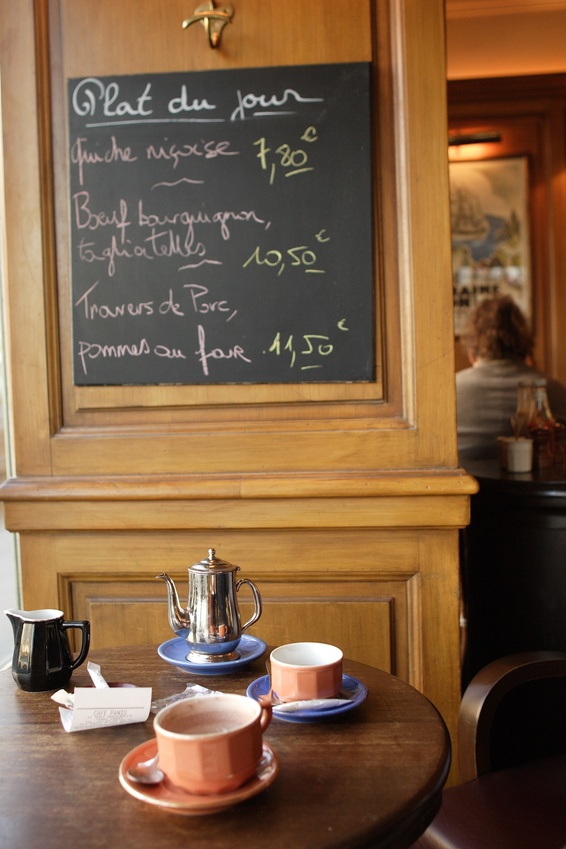Menu For Success
Leaving out the more obvious considerations such as 'Do I like the feel of the place?' and 'How does the food look on the plates of people eating there?' here are a few more ways of spotting a good and bad Parisian eating place:
- Is there a waiter or waitress standing outside, hustling for custom? Bad sign. In any decent café or restaurant, all the waiting staff are busy serving customers.
- How many people are impatiently waiting for their food? A full restaurant can be a good sign, of course, but if there are more people waiting than eating, the place may only be full because it's trendy, and not because of the quality of the food and service
- At lunchtimes, does the restaurant look as though it is catering for groups of Parisians colleagues? If so, this is a huge plus point. The general standard of lunchtime cafés and restaurants is far higher in office districts because the chefs have to keep workers happy five or six days a week. (In the evening, though, when the demanding workers have gone home, the same café might bring in a less experience chef, so beware.)
- Take a careful look at the menu, which by law must be on display outside the restaurant. Is it translated into several languages? Almost certainly a bad sign. Parisians are inherently snobbish and don't respect the taste - gastronomic or otherwise - of foreigners, so an establishment that caters mainly for tourists won't make much of an effort. As in other countries, a restaurant that offers linguistic help to foreigners can actually be the best place for foreigners to eat.
- Does the menu have a handwritten plat du jour, either on a Post-it or a blackboard? IT should. A short menu with a plat du jour is far better than a long, varied menu without, because the ingredients will have been bought in specially.
- In the Poisson (fish) section of the menu, is there a fish other than salmon? if not, the chef is mechanically ordering in salmon into Paris. Despite its distance from the sea, it has one of the best fish markets in Europe. Sometimes, chefs will propose a duo de poissons - two fish in the same dish. Again, if one of these is salmon it's not a great sign.
All of the above may sound very picky, but if you're in Paris for a weekend. And in a city so obsessed with good food, and so full of it, there's really no reason to eat badly. And so bon appetit, which by the way, is pronounced the final 't' - it's 'bonapay-TEE'. A snooty Parisian once told me that it is slightly vulgar to say this before eating, as though there were some absurd risk that you might not eat well in France. But most Parisians seem happy to say it, and it would be churlish not to do likewise, a bit like saying bonjour because you're bound to have a wonderful day in Paris.
Though the above mentioned snooty Parisian was partially right - if you avoid the obvious tourist traps and über-trendy places where people go to be seen rather than eat, it is fairly difficult to eat badly here, and easy to eat wonderfully well without risking bankruptcy.
Find me on Twitter and on LinkedIn



Great Post ! I wish I had had, such insight back when I was at uni,and lived/worked in Paris . I was rather naive when it came to parisien life, being an 'Etranger'. I guess I ate in a few bad restos, but soon learned from observing the 'locals', and where they went to lunch. Your article rings so true, brings me back to those memories. Great tips! The best restaurants were the ones that had a short menu of local, seasonal food. The worse one's were those who would tout for business and almost bully you from the doorside to get you through their doors!
ReplyDelete